I AM KARACHI: Reigniting Hope
By Mahnoor M. Farooqui | Society | Published 7 years ago
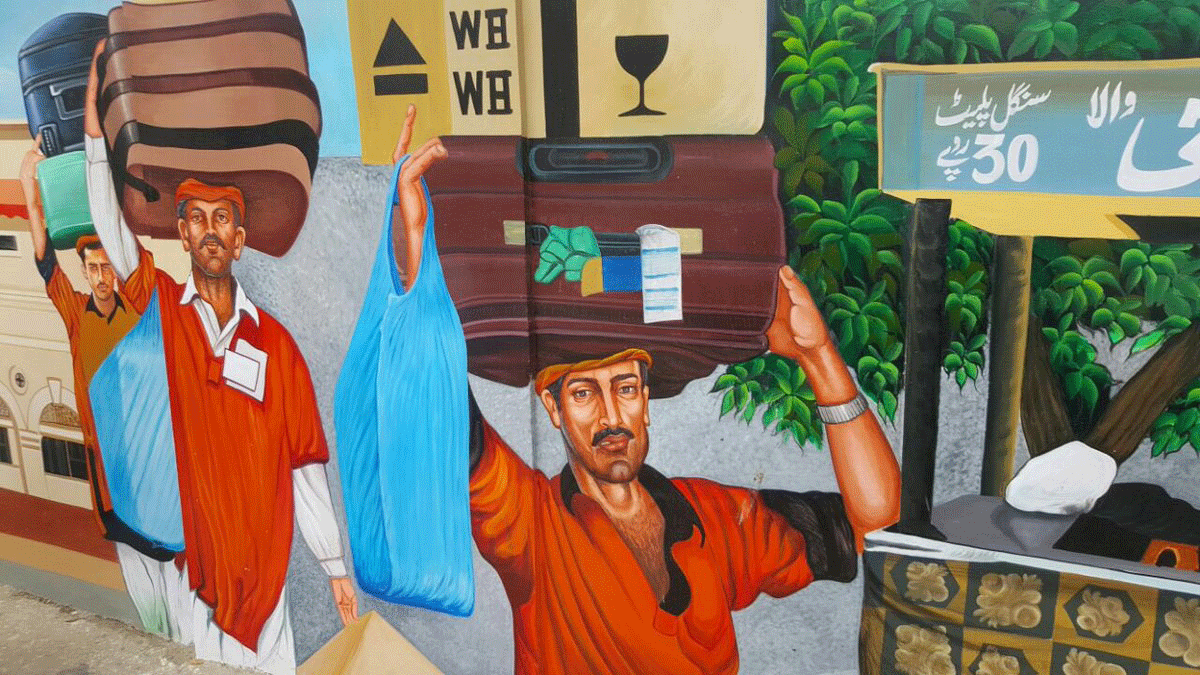
Walls of Peace: Bringing colour to the streets of Karachi
Karachi was known as the ‘City of Lights’ for its inexhaustible and vibrant nightlife in the ‘60s and ‘70s. Well-heeled tourists would come via air, sea and overland to visit one of the major cities of the subcontinent; a metropolis rich in history, ethnic diversity and entertainment. This changed very quickly in the ‘80s under the double whammy of an Islamisation drive and a series of culture-quashing ordinances.
Currently the world’s sixth largest city, Karachi has not quite recovered from the movement that struck at the core of its ingenuity and vivacity. The city has also not remained unscathed from the dilapidation that accompanies rapid urbanisation , which is often made worse by the large disparities in wealth and selective progress in certain areas. Despite being a melting pot of various religions and ethnicities, the city had been slowly suffocating under the weight of discrimination, ignorance and violence over the last three decades. The gradual restoration of peace and development from 2011 onwards has been a slow process, with assorted efforts by diverse groups to fill the cultural vaccuum in the areas of innovation, health and education. I AM KARACHI (IAK) was an outcome of the effort to restore Karachi’s lost cultural vibrancy.
In 2015, Karachiites passing through Gulistan-e-Johar, M.T. Khan Road, Shahrah-e-Faisal, Saddar and many other areas, were stunned to see brightly painted walls. Bold and vivid images of truck art, ethnic motifs, animals, trees and rows and rows of crows sitting on wires had changed the look of the usually defaced and run-down walls bordering the potted streets of Karachi. Dubbed the ‘Walls of Peace’ project, this artwork-on-the streets series was the brainchild of IAK and led, at the time, by famed illustrator and author Rumana Husain, with artists, students and volunteers from numerous institutions and companies, spreading messages of love, peace and beauty through colourful and heartfelt paintings. It has been three years since the project was launched by the IAK in partnership with the Vasl Artists’ Association, and over 3,000 walls across Karachi still stand untarnished while inspired by IAK, nearly 45,000 walls all over Pakistan now have artwork on them.
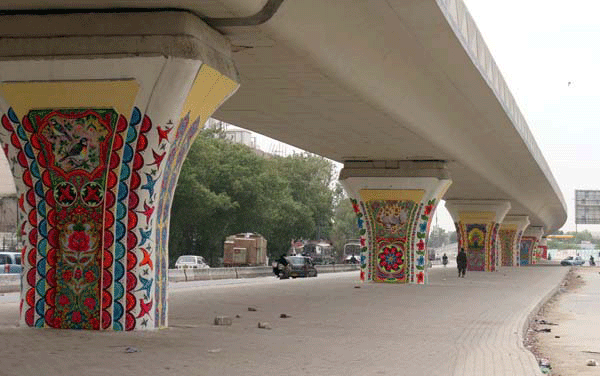
Photo taken by Deneb Sumbul.
“It was a brilliant idea to paint Karachi’s graffiti-marred walls with pretty pictures. I am not an art critic but have enough sense to prefer a picture of beautiful animals to slogans declaring adherents of different faiths/sects ‘wajibul qatl’ (liable to be executed),” wrote renowned journalist and writer, Zubeida Mustafa, on her blog.
IAK was started as a civil movement in 2013, inspired by the Karachi Youth Initiative – a venture funded by USAID. It became clear to those involved in this uplifting venture, that in spite of its positive effects, the project’s temporary time-frame was not one that would ensure a long-term impact on Karachi, particularly its youth. IAK was created with the intent to provide healthier and more creative alternatives to the corruption, violence, ethnic and religious divides that they had seen for the most part of their lives.
The IAK wanted to bring an end to the narrative of crime and terror. A simple claim of ownership over the city, ‘I AM KARACHI,’ was both a declaration and a promise of the citizens who would work to regain the city. “The swiftness with which people wanted to recreate engagement with the youth and reintroduce a semblance of sanity, was incredible,” said Ambareen Kazim Main Thompson, the Executive Director of IAK.
Jameel Yusuf, Amin Hashwani, Shahid Firoz and Sheema Kermani were among the many renowned professionals and activists of Karachi behind the founding of IAK. The current Executive Committee has Amin Hashwani as president, Shahid Firoz as vice president, Saad Amanullah as general secretary and Rumana Husain, Ronak Lakhani, Ghazi Salahuddin, Roger Dawood Bayat and Feroz Uddin Khan as members.
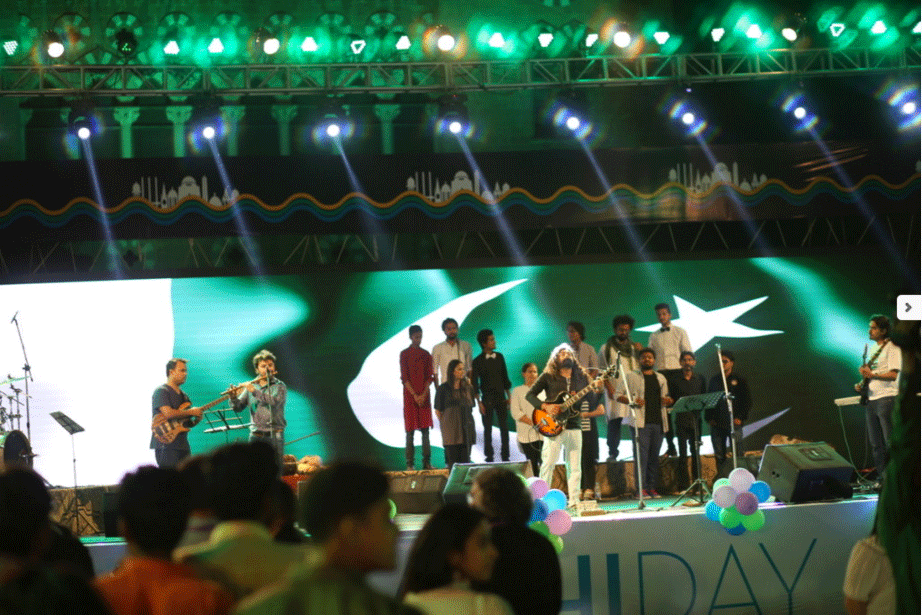
Performers at I Am Karachi Day 2016
The initial plans for the IAK campaign were that it would act as an umbrella platform for smaller ventures to operate under, accomplishing their own objectives. “It was a good idea, but practically speaking, not possible,” said Ambareen. The separate campaigns, meant there would be no cohesion in the vision, no collaborative thought process, which would defeat the original purpose of coming together. Funding would become more difficult to acquire with separate campaigns and a formal structure was necessary to make sure all the smaller movements would operate on the same directives. When it came to forming a team, citizens were ready to help in one way or another, offering to provide free spaces, volunteering and helping fund the initial activities.
IAK established itself as a not-for-profit organisation in 2014, and Ambareen, the Executive Director, took over in November 2016. Having worked as a private sector industry specialist in market development, project and operations management, Ambareen’s corporate background proved to be integral to her capabilites in steering the organisation through obstacles, finding solutions and building platforms. IAK is now run on a corporate model, operating cost effectively with a return-on-impact investment.
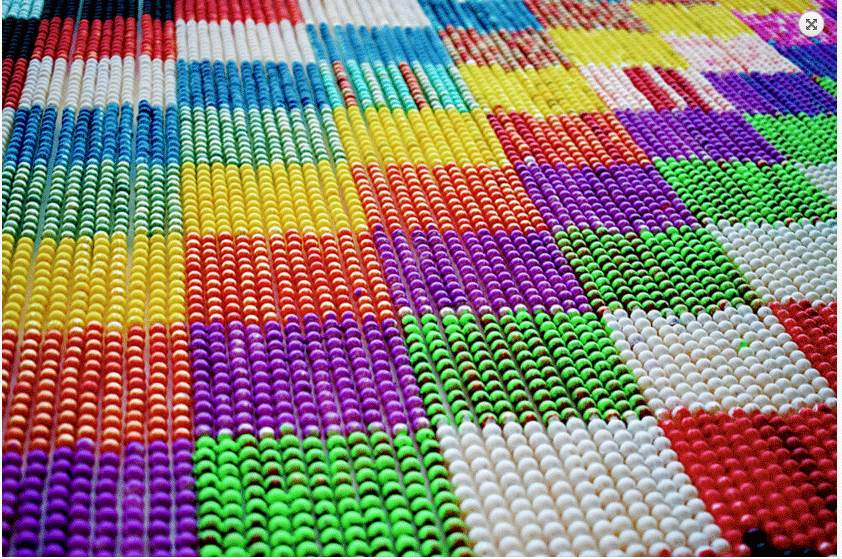
A public art installation for IAK’s programme Munaqqash.
The organisation follows a mandate that works to enhance public awareness and advocacy, bringing civil society together and reclaiming public spaces. Of the many projects they undertake, targeted towards development in the softer side of youth engagement, they focus on promoting socio-cultural activities and peace-building through arts, culture, sports and dialogue.
Alongside the Walls of Peace, IAK’s public art project, Munaqqash, is aimed at developing public spaces to emulate scenes of beauty. Through public art installations, people from all walks of life, will have the opportunity to interact with art face-to-face. IAK plans to hold Pakistan’s first International Public Art Festival (IPAF) in December 2018. With the open call on their Facebook page, the largest public art intervention aims to celebrate the essence of Karachi and promote unity and awareness by having teams or individuals submit proposals for sustainable communal, recreational and resting places.
The IAK Talks and IAK Dialogues are two ongoing initiatives that are carried out periodically in an effort to alleviate the misunderstandings and hatred that stem from ignorance of people’s differences. The IAK Talks are inspired by TED Talks, where successful thinkers and leaders speak to motivate the youth. IAK Dialogues focus on raising and discussing taboo issues and diverse topics that range from health, society, work, interpersonal relationships and life. “We no longer talk to people, we argue,” said Ambareen. “We have forgotten what it means to wait for someone to finish what they were saying before we start. Debating or conducting dialogues are a far cry on our television shows, the hosts just shout at one another. This is why it was so vital to create a platform – open to all – that embraced the art of conversation, and what is said through it.”
The IAK Talks were last held at the Institute of Business Administration’s auditorium, which can accommodate upto 500 people. However, so many attendees showed up for the Talks that IAK had to turn most away; it was impossible to accommodate so many. It was a heartening display; people are starving to listen and to be heard, they merely need a safe place.
For those unable to attend the talks, IAK digitises the talks, putting them on their website, available for all to view. On their interactive and striking web page, blogs and pictures inform visitors to the website of their accomplishments, the IAK team and the winners of the IAK Awards – the awards ceremony which acknowledges the hard work and achievements of everyday heroes.
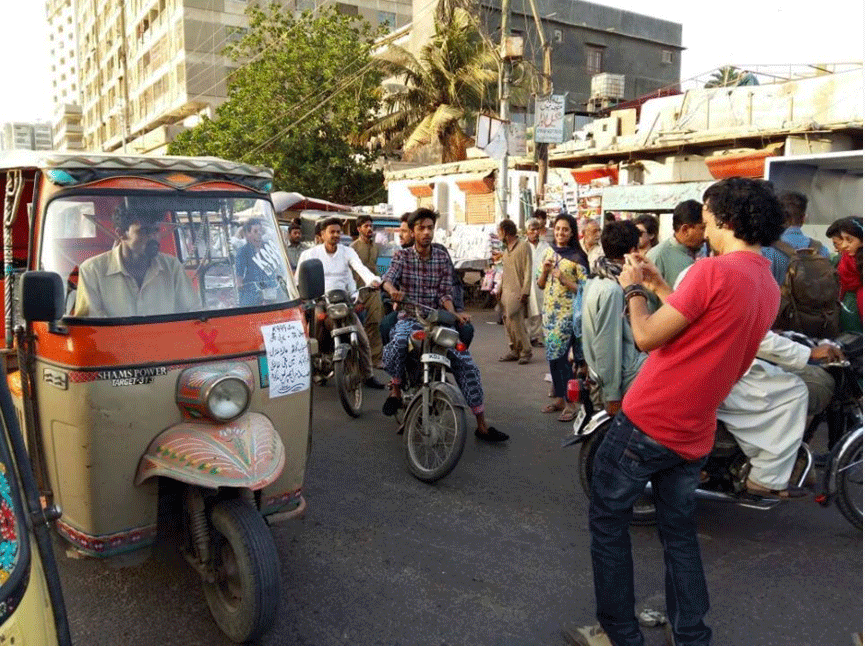
Reclaiming Karachi: IAK’s photo-walk from Empress Market to Fresco Sweets.
The IAK Music Mentorship Programme and the IAK Sports encourage the use of music and physical activities through engaging and interactive classes and games, allowing the youth to broaden their education outside of standardised curriculums. The annual IAK Music Festival, planned for 2019, intends to have local and international performers and musicians from Japan, France and Italy. Last year’s festival had attendees from all across Pakistan coming specially to Karachi to see the musical extravaganza.
IAK’s programmes and events are often organised with their partners, or done in collaboration with corporate sponsors who are able to provide venues, refreshments and other logistic support. The most prominent partnerships in the past have been with Toyota, in a Clean Karachi campaign, in which public awareness campaigns about cleanliness and organised waste disposal in some areas of Karachi were carried out; TPL Maps, which plotted the IAK Walls on their mobile and web applications as landmarks visible to everyone, to signify the importance of the walls and increase visibility; and with the International Committee of the Red Cross (ICRC), a programme was carried out with the objective of informing the citizens of Karachi of emergency service vehicles and road etiquette.
Most citizens who used to lament over the Karachi of old, have much less to say in light of all the initiatives IAK has taken and accomplished. While the ‘City of Lights’ may never return to its former glory, it is evolving into a stronger, more progressive and inclusive metropolis, benefiting from the leadership provided by IAK and the ownership of its people.
“Karachi is home. It is what defines me, it is what defines us.”
– Ambareen Thompson,
Executive Director, I AM KARACHI
How does IAK decide on which programmes to undertake?
The organisation has a board, and our mandate — set by the board — is a precedent for what we want to accomplish, and we never stray far from it. As an apolitical, non-denominational organisation, we do not work with anyone who has any overt political affiliation, and focus purely on our own objectives.
IAK works to understand the environment and the social implications of our initiatives to better execute them. We are not naïve enough to think we can solve Karachi’s problems, as a lot are state issues. When the private sector keeps taking up things without holding the government accountable, there is a vaccuum left. We’re filling the gap that has been left by the state and private institutions, and reaching out, particularly at the level of the youth, to fill in the gaps.
Why give emphasis to art, music and sports? Why not health or education?
Karachi has a huge philanthropic community, where one can ask to set up a hospital or a school, and people are quick to help out. However, if one were to ask for donations or support for socio-cultural ventures, people hesitate. When you work on these activities, it is the mental and emotional health of a city which benefits it. In 2017, it was documented that 35.7 per cent citizens of Karachi are affected with mental illnesses, depression being the most common. People have nothing to do, nowhere to go to relieve stress, enjoy themselves, or learn something new. When you give people opportunities to expand their prospects in skills-based or wholesome activities, you are in effect, mitigating the costs of healthcare at a very fundamental level.
The whole ethos behind the talks and the activities we hold, is to reach crowds that do not have access to these programmes. The intelligentsia stay within the confines of their home (and cliques), not interacting with the public. These activities give everyone — including people from North Nazimabad, Federal B Area, Sohrab Goth and many other areas — a reason to come out and engage with one another on an immediate level.
People cannot relate to one another with such broad divides. If you engage in a religious debate, you can never win. When you use art and music, you can still win those battles because you can do it creatively. Our problems need creative solutions, and this is one way to bring them to light. By kickstarting the minds of those who have the power to think of them.
Why are public spaces important?
When you inhabit a city, you need open spaces of at least 10 per cent for people. We were at 3.6 per cent in 2014, but now are down to 2.7 per cent.
Fourteen playing fields – available for public use – were under varying levels of encroachment. IAK fixed up the fields, provided them with gym, sporting and recreational equipment, trained people to work as staff, and helped set up web cafés and eateries in the fields, so they could start generating income and garner attention. When you abandon public spaces, they cease to exist.
When Marvi Mazhar revamped the Pakistan Chowk, we helped kickstart the art activities, mushairas, open air qawwalis and music classes. It’s become a place for the residents to gather, engage in dialogue and meet one another.
Public spaces also become an additional mark of beauty for the city. Some of the interventions we plan on doing for the International Public Art Festival (IPAF), is beautifying the Native Jetty bridge (Netty Jetty pul), and having vertical gardens, on pillars under bridges. We’ve found local partners who will look after the plants and maintain them for three years at a time, as a great part of the campaign is about making sure these efforts are sustainable.
How did IAK grow to become such a large platform so quickly?
When you face the kind of unprecedented violence Karachi has faced, people shrink into silos. They stay within the familiar – their own communities, own religious affiliations — and away from anything outside. This goes against the spirit of Karachi completely.
IAK works as a mediator of most of the projects we do, so we never fall under the weight of legal issues. We have to say that our local government, by and large, has good people. People who want to see betterment in their areas. Of course there are those with vested interests – the land mafia and so on – but when they see something good is happening, they are quick to help.
IAK has a spectacular team with an average age of 23-24. They work hard, putting in many hours to make sure we pull off our events and activities successfully. IAK currently works in 82 communities across Karachi.
However, the ripple movement that IAK created, started from the Walls of Peace. Lahore, Faisalabad, Peshawar, Bahawalpur, and as far as Bahrain and Qatar, reached out to ask who the artists were, how we did the art and how to go about it. Acts of solidarity and encouragement , such as Berger Paints in Lahore, who said they’d give paint at discounted prices for public art, were a huge part of its success.
We also document the stories of people we work with, putting small videos on social media, which go viral, and attract attention. Shining a light on our unsung heroes and the young people who work hard to give back to their communities, has also brought in incredible support and appreciation from the people of Karachi.
How is the IAK Music Festival unlike any other that has been arranged in Karachi?
Karachi is losing its culture. We no longer have the traditional music. We are not producing ghazal singers, or qawwals, who were once an intrinsic part of our music industry. We have restricted music to commercial avenues of success, and are not doing enough live music which, on its own, is a tradition.
The last IAK Music Festival had 40 acts over two days. We had a number of artists such as Fareed Ayaz, Fuzon, Zoe Viccaji, Arieb Azhar, Lyari Underground, women from the Kalash Valley and many more. Most of the performers were not professionals, but have gone on to be signed by Coke Studio and Patari.
IAK gave 2,000 free passes to different communities, and sold the tickets at Rs. 500, to keep it affordable for all income backgrounds. We held open-call auditions from areas all over Karachi, recruiting young, talented musicians and singers to perform. And when the younger performers go back, they become ambassadors for this venture, and can help engage with the youth in their own community.
People from Defence stood next to burqa-clad women from Lyari, listening to sounds and artists they don’t normally get to see or hear, and interact with people whom they would never converse with otherwise.
Bringing people out on common platforms, recreating our many cultural and artistic heritages again are important. We should be a city that everyone knows by its art, its culture, its festivals. How long will we be known as the fourth worst city in the world?
Karachi is home. It is what defines me, it is what defines us. We are a privileged few, and I want to use that to leave a better Karachi for my son than the one I’ve inherited. I believe we (the EC and team) all think of it that way.


